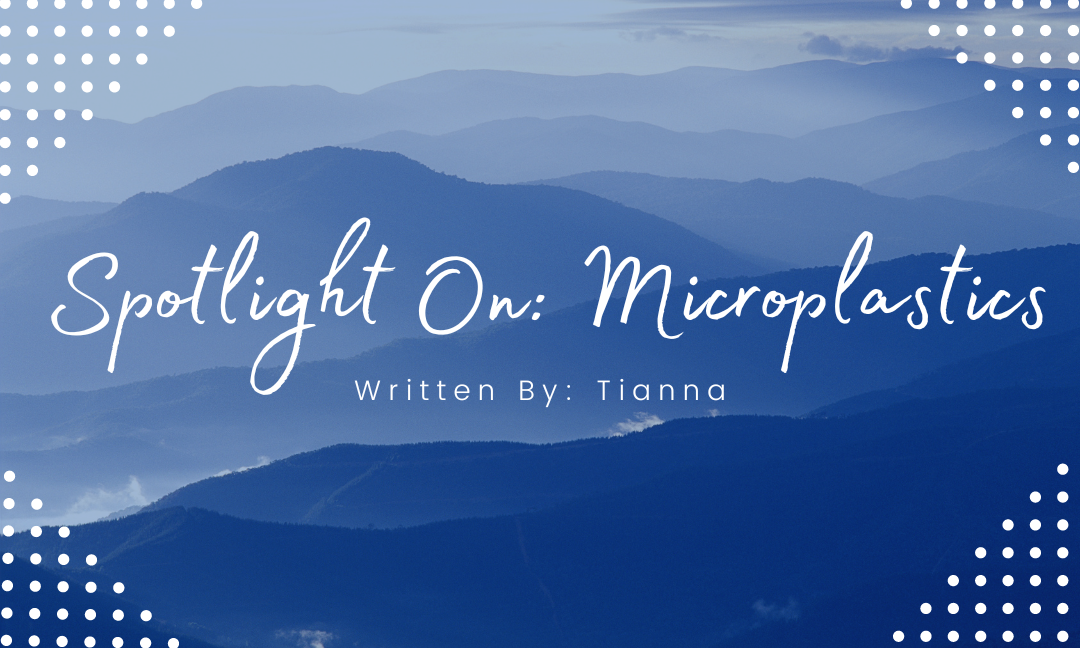Written By: Tianna
Edited by: Ravjyot Ughra
Designed by: Jiya Mehta
Published by: Maryam Khan
I feel like we have all heard the term microplastics before. But do any of us really know what they are and their true impact on the environment?
Microplastics are tiny plastic particles that can be broken down into two categories; primary microplastics, and secondary microplastics. Primary microplastics are tiny particles designed for commercial use. They can be found in things such as cosmetics, microfibers, and fishing nets. Secondary microplastics are a result from the breakdown of larger plastic. This can be through the sun’s radiation, ocean waves, and other factors.
Microplastics are extremely harmful to the environment and the well-being of animals. Plastics can take hundreds or thousands of years to break down, and even then they may not break down enough to be harmless. Microplastics are often consumed by marine animals, and cannot be properly taken out of our water systems yet. Things such as littering, storms, and single-use plastic contribute heavily to the levels of microplastics we have in our waters and earth.
Research on the long-term effects of microplastics is still being conducted, so scientists do not know much about the harm caused by microplastics. We do know a bit though and it’s not excellent. When injected microplastics can cause cell damage, block up gastrointestinal tracts of some species, and cause inflammation. Toxic chemicals can also adhere to the microplastics causing illnesses to marine life when ingested.
Although it will be difficult, it is not impossible to remove microplastics from our systems. Many scientists are researching different cost-effective and eco-friendly ways to remove microplastics and move toward a greener earth. Many sites say that double filtration of your water can help remove some of those plastics (basically just re-filtering your water that comes out of your tap). Reducing the use of single-use plastic, and recycling properly can greatly reduce the levels of microplastics going into our oceans.
Avoiding “microbeads” will also help the environment, and your health.
Microbeads are small particles made up of a substance called polyethylene and polypropylene and these are small, unnecessary, plastic molecules in many cosmetic, toothpaste, and body care products. By avoiding the ingredients polyethylene and polypropylene you are making sure less microplastics make its way into our ecosystem, and making sure you aren’t ingesting any either!
Overall, microplastics are very bad. They have weaselled their way into almost everything, and will take a long time to get out. But don’t lose hope! Staying more conscious about the ingredients in the things you buy, avoiding single-use plastic as much as you can, and recycling properly are three easy things you can do to make sure microplastic pollution is reduced!
Works Cited
Hutchinson, Brian. “7 Solutions to Ocean Plastic Pollution.” Oceanic Society, 24 February 2022, https://www.oceanicsociety.org/resources/7-ways-to-reduce-ocean-plastic-pollution-today/. Accessed 8 December 2022.
Liitschwager, David. “Microplastics.” National Geographic Society, 19 May 2022, https://education.nationalgeographic.org/resource/microplastics. Accessed 8 December 2022.
Welsch, Chris. “German chemist creates new way to take plastics out of water and clean up oceans.” European Investment Bank, 4 March 2022, https://www.eib.org/en/stories/plastics-water-pollution. Accessed 8 December 2022.

